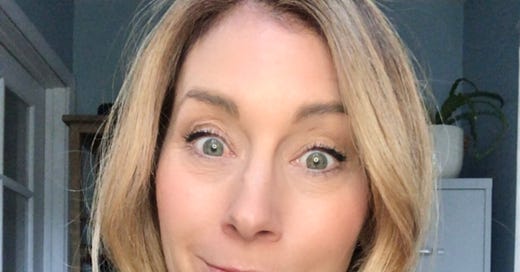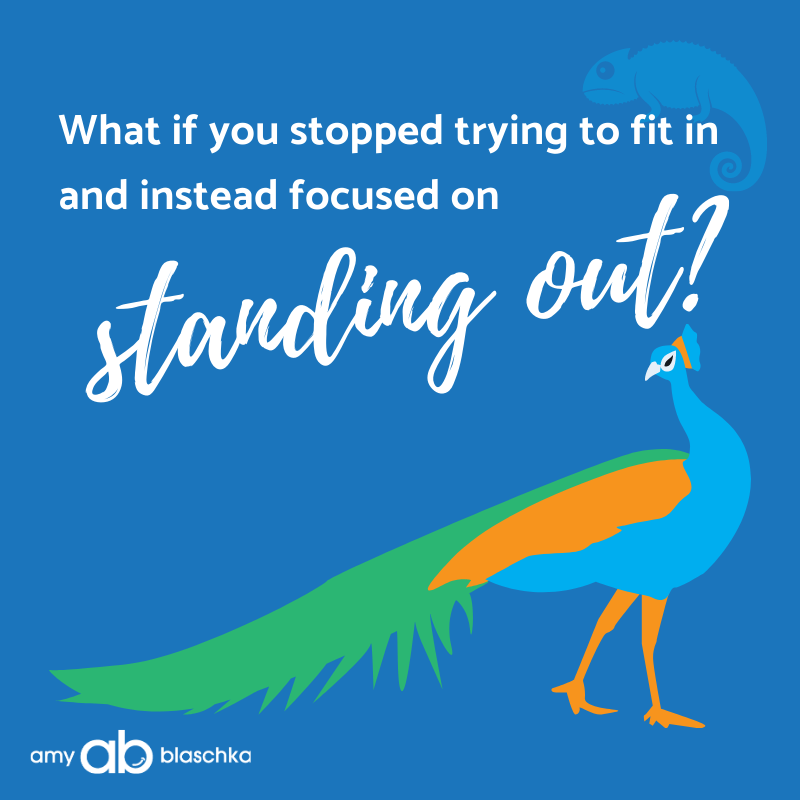I love Sumo* oranges.
Yes, they’re weird looking. (I like to call them the “pugs” of fruit because their loose, undulating folds mirror those of the so-ugly-they’re-cute canines namesakes.)
The value is what’s inside: deliciously sweet and fragrant orange flesh that delights the taste buds and invigorates the palate. But you’d never know that unless you got past the bumpy, lumpy exterior that hides the glorious fruit within.
Imagine if the Sumo only thought of itself as an “ugly orange,” trying to fit in with the citrus perfection of navel oranges?
Yet that’s what so many of us do, yearning for acceptance. From the playground to the workplace, we spend our whole lives trying to fit in, whether consciously or unconsciously.
And it’s no wonder: we’re wired to belong. We want others to like us. Rather than risk rejection for being different, it’s safer to blend in.
But in a professional sense, that can be a big mistake.
When you try to be all things to all people, you end up being a non-compelling, watered-down version to everyone. Your offering becomes a commodity.
What if you stopped trying to fit in and instead focused on standing out?
When you embrace and highlight what makes you different and how your uniqueness adds value and helps people, you shine.
Because who wants "perfect" when you can have authentic and better? (Be like the Sumo!) And once you get a taste (see what I did there?) of what's real, well, that's when life gets interesting.
This reminds me of a saying I heard years ago while attending a conference (hey, remember those?) that has stuck with me to this day:
You are something specific to a special few.
That brilliant nugget came from Sasha Strauss (who is probably sick of me constantly quoting him). It's a reminder that you don't need—nor should you try—to please everyone and instead focus on being 100% you so your intended audience, your tribe, or your slice of the interwebs can find and appreciate you.
His words resonated with me so much that I literally sketched him saying them. Don't believe me? This now yellowing drawing is taped to my office wall in plain sight:

And speaking of that, have you ever unconsciously hid in plain sight? (I did for years, and boy, that was awful. I don’t recommend it AT. ALL.)
Before you say no, consider if any of the following statements ring true:
You’ve always dreamed of becoming a (fill in the blank), but haven’t actively pursued it because it’s not practical, it’s too late, or you tell yourself what you’re doing now is good enough (when in fact, you feel deep in your bones that it is not).
When you speak about (fill in the blank), you’re animated and excited; when you talk about what you do now, you are not.
You’re doing fine professionally, maybe even exceptionally well, but you still feel that something’s missing.
Your life is good by most standards, yet you’re still unfulfilled.
These are all signs that you’re (gasp!) hiding. (C’mon now, we just talked about being like the Sumo!)
Listen, though it may sound overly dramatic, I speak from experience when I say that the trajectory of my life changed for the better once I did one thing: stop hiding. I talk more about it in my latest Forbes article and share how to move out of the shadows and toward what you *actually* want.
And before I go, just for fun, tell me: If you could be a fruit (any fruit, not just a glorious Sumo), what would it be and why? Let me know in the comments by clicking this button.
Shine on,
Amy
P.S. First time here? (Aww… hey there, newbie!) Be sure to check out the website to catch up on previous issues.
P.P.S. When I’m not writing this newsletter or my other content, I’m a social media ghostwriter (yep, that’s a thing), helping founders, entrepreneurs, and CXOs craft their stories to communicate and connect better by magnifying their reach and impact. (Think personal branding and thought leadership.) Learn more here.
P.P.S.S. Now that we’re inbox-exclusive, you might want to follow my interweb shenanigans too. I’m on Forbes, LinkedIn, Twitter, Instagram, and now, Clubhouse. (No link for that last one. If you’re also there, you can find me at @amyblaschka.)
P.P.P.S.S. One more thing: If you think this post would resonate with others, feel free to share it with your friends. Or better yet, invite them to join our Illuminate Me tribe!
*Why do they call them Sumo oranges? Ah, this is a fun one. Well, they’re Japanese in origin (like Sumo wrestling), they’re bigger than most of their peers (like Sumo wrestlers), and they’ve always got a cute little top knot-style bump on top like the aforementioned wrestlers. (And now that you see it, you’re smiling, right?) Another fun fact: they’re also the most difficult citrus to grow. Apparently, it takes four whole years of constant love and care before a Sumo Citrus tree produces any fruit.










Totally #TeamGuac--the simpler, the better (although I do find a bit of red onion really pops!). Thanks for another inspiring post, Amy.
Amy, the concept of seasons of a career is very useful. I not only change jobs, but (hopefully) change/grow who I am. Thus, regardless of career trajectory (conventional, unconventional), I should be constantly growing personally and professionally. Hence, what I am capable of, my professional capacity, grows as I prepare to move forward into the next season of my career. Without seasons, I can become trapped into the same-old, same-old of no growth and professional stagnation (also referred to as "retired in place"). Personally, I'm in a new season - recently retired and purposefully transitioning to blogging and active on LinkedIn.